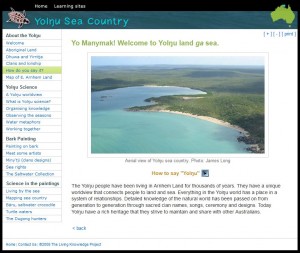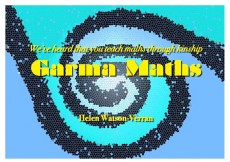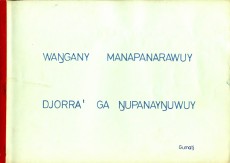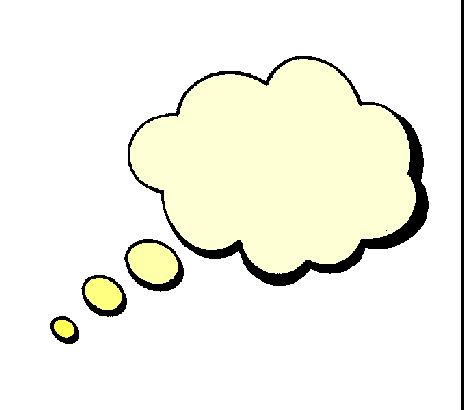Resources and Reading
BILINGUAL EDUCATION
 Indigenous Languages in Education: What the research actually shows.
Indigenous Languages in Education: What the research actually shows.
Booklet written by Chuck Grimes in 2009, produced by AuSIL, with hundreds of useful references.
Free to download from http://ausil.org.au/node/3741
NT Bilingual Education: the debate about its effectiveness and value by Brian Devlin
This 2009 article responds to the announcement of the ‘First Four Hours in English’ policy announced by the NT Department of Education in October 2008, with a careful re-examination of the evidence on which the decision was based.
Barunga Bilingual Program
This 25 minute video shows aspects of Barunga School’s Bilingual Program in October 1981 demonstrating and discussing the teaching of Kriol and English. Barunga School was one of the early bilingual programs in the Northern Territory and most of the language materials in Kriol and other languages, Dalabon, Jawoyn and Rembarrnga have been digitised and some are now available on the Living Archive website. Unfortunately after the program was closed down in 2000, some materials were destroyed.
Published on Dec 4 2013, by AuSILVideos.
Evaluating the Northern Territory Bilingual Program by Samantha Disbray.
- Slides presented at Strehlow Conference, Alice Springs, 25 September, 2014.
- Published as a paper in the proceedings of the 2013 Australian Linguistic Society Conference in Melbourne.
The Status and Future of Bilingual Education for Remote Indigenous Students in the Northern Territory by Dr Brian Devlin
- Article published in the Australian Review of Applied Linguistics,34(3):260–279.
Gaps in Australia’s Indigenous Language Policy: Dismantling bilingual education in the Northern Territory. Josephine Caffery, Patrick McConvell, Jane Simpson. Dec 2009. AIATSIS Discussion Paper Number 24
- Through national and international evidence this discussion paper outlines the cognitive, societal and education benefits of bilingual education for children whose first language is not English.
LEARNING THROUGH INDIGENOUS LANGUAGES AND CULTURES
 Living Knowledge – Indigenous knowledge in science education (website)
Living Knowledge – Indigenous knowledge in science education (website)
- Includes useful information about Yolŋu Sea Country
- Yolŋu Science and worldview
- The representation of science in bark painting
- Additional Readings:
- Cross-cultural categories, Yolŋu science and local discourses (Unpublished paper by Howard Morphy, ANU, 2003)
-
Where’s the science in this? The problem with attempting to isolate aspects of Indigenous practice and thinking as examples of ‘Indigenous Science’. (Unpublished paper by Pip Deveson, ANU, 2005)
OTHER ARTICLES and MEDIA
- Gale, M. (1992). Publish or perish?: observations on the reasons for writing in Aboriginal languages. Australian Aboriginal Studies, 2, 42-48.
- Gale, M. (1994). Dhangu Djorra’wuy Dhawu: A Brief History of Writing in Aboriginal Language. Aboriginal Child at School, 22(1), 22-34.
- Gale, M. (1995). Pirrarni nganimparnalu yanu… ;Yesterday we wenr …’: storytelling in Warlpiri and its implications for literacy. International Journal of the Sociology of Language, 113, 37-58.
- Lajamanu Keeps Culture and language Alive and Builds Business. The passing on of stories and painting at the Art Centre in Lajamanu, uploaded from You Tube
- Marika-Munggiritji, R., & Christie, M. (1995). Yolngu Metaphors for Learning. International Journal of the Sociology of Language, 113, 59-62.
- Marika-Mununggiritj, R. (2002). Some notes on principles for Aboriginal pedagogy. Ngoonjook, 22 (December), 44-45.
- Marika, R. (1998). The 1998 Wentworth Lecture. Australian Aboriginal Studies(1).
- Marika, R., Ngurruwutthun, D., & White, L. (1992). Always together, yaka gäna – Participatory research at Yirrkala as part of the development of a Yolŋu education. Convergence, 25(1).
- National Museum of Australia, Painting about Yams and Butterflies from Milingimbi: Bartji ga Boṉba painted by Binyinyuwuy, 1967, Djarrankuykuy Clan, Djambarrpuyŋu language, 1928 -1982 Collected by JA Davidson at Milingimbi. Found at
- Ngurruwutthun, D. (1991). The Garma project. In B.Wei, D. Nayin, Y. Rom, & N. Nginingawula (Eds.), Aboriginal pedagogy: Aboriginal teachers speak out (pp. 107-122). Geelong: Deakin University Press.
- Traditional Aboriginal Dance, Manikay and Buŋgul, Ŋaymil songs. This is an impromptu performance at Milingimbi initiated by brothers Terrence Gaypalani and Brendan Ganambarr, uploaded from Youtube
- Verran, H. (2010). On being a Language and Culture Learner in a Yolŋu World . Learning Communities, International Journal of Learning in Social Contexts Australia, Issue 2, Teaching From Country, 84-90. Reflecting on on learning to ‘do’ Yolngu concepts through learning the rules of kinship to expand understanding of concepts.
- Warramiri is a website developed at CDU by Guthadjaka about the Warramiri Clan and shows yolŋu life, language and culture.
- Wilkinson, M and Bradbury, J (2013). Number and Two Languages in the Early Years: Report on a Project with Paraprofessional Indigenous Teachers in Two NT Northeast Arnhem Yolŋu Schools in Australian Review of Applied Linguistics, v36 n3 p335-354.“This paper focuses on the role of language and some issues associated with identifying appropriate language of instruction for three foundational Maths ideas in the Early Years of schooling.
 A Garma Maths Course of Study in the Yirrkala and Laynhapuy Schools Community, Helen Verran, 1992.
A Garma Maths Course of Study in the Yirrkala and Laynhapuy Schools Community, Helen Verran, 1992. “This book is about many of the ideas (concepts) that children must have if they are to understand the maths that they will do in school and at work.” published at the Yirrkala Literature Production Centre in Gumatj, ~ 1980.
“This book is about many of the ideas (concepts) that children must have if they are to understand the maths that they will do in school and at work.” published at the Yirrkala Literature Production Centre in Gumatj, ~ 1980.
What do you think? 
Choose a resource or reading from the above list and suggest how it adds to the debate regarding english only programs versus bilingual/two way programs? How does this debate include language ownership and using an Indigenous language for learning in different contexts?